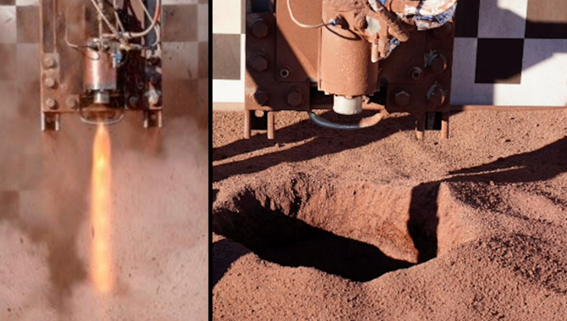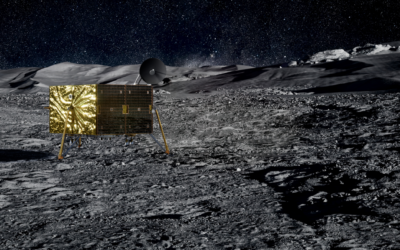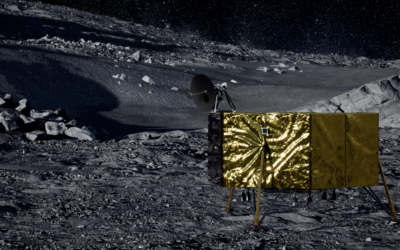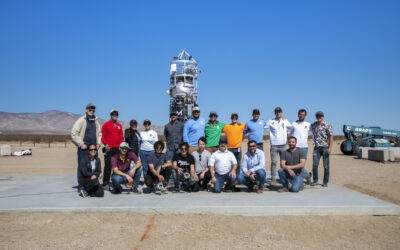Our new method for a Rocket Mining System gets us one step closer to achieving this mission. This system would enable rapid, reliable, and ongoing extraction of lunar ice and volatiles located at the Moon’s polar and permanently shadowed regions.
Usable as drinking water, rocket fuel, and other vital resources, lunar ice extraction is critical to maintain a sustained presence on the Moon and allow future missions to Mars and beyond. It can also be used in conjunction with other volatiles found in lunar regolith, such as oxygen and methane, to support energy, construction, and manufacturing needs. There’s a lot of promise – water excavation is just step one!
Get the scoop on how our Rocket Mining System works in our latest video produced for NASA’s Break the Ice Challenge, and keep reading for more details.
Masten’s Rocket Mining System
Masten teamed up with Honeybee Robotics and Lunar Outpost to design a new Rocket Mining System that can rapidly extract frozen volatiles from the Moon. This method disrupts lunar soil with a series of rocket plumes that fluidize ice regolith by exposing it to direct convective heating.
It utilizes a 100 lbf rocket engine under a pressurized dome to enable deep cratering more than 2 meters below the lunar surface. During this process, ejecta from multiple rocket firings blasts up into the dome and gets funneled through a vacuum-like system that separates ice particles from the remaining dust and transports it into storage containers.
The small, low mass system, including the rocket fuel, engine, collapsible dome, and storage containers, can be attached to a rover and delivered to the Moon on Masten’s lunar landers. The system is projected to mine up to 12 craters per day and produce 100 kg of ice per crater. That would allow us to recover more than 420,000 kg of lunar water per year!

As one of the first commercial companies sending a lunar lander to the Moon, Masten is in a unique position to deploy this system. We’ve been testing plume surface interactions with our reusable rockets and engine test stands for more than a decade. The tests we conduct have allowed us to collect cratering data using a frozen lunar regolith simulant at our facilities in Mojave.

What’s next? We develop the full system and begin testing. Easy enough, right? Stay tuned for more updates!


